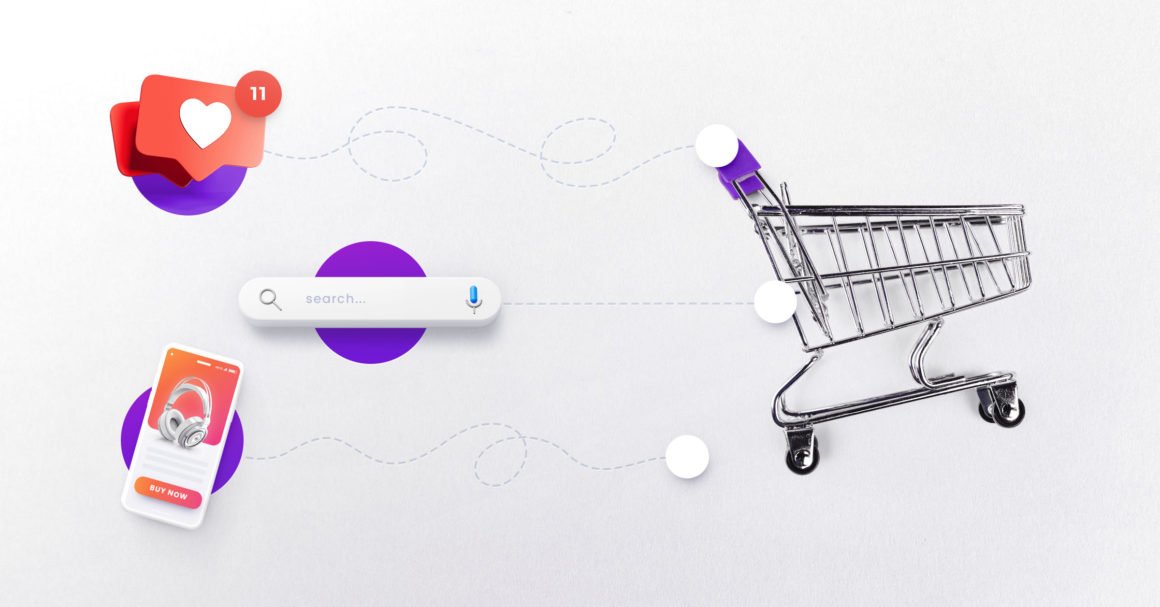Conversion attribution is a process that is superficially understood by many marketers but truly understood by only a few. This is usually because of:
- Complicated & confusing terminology
- Many competing models and approaches
- No one-size-fits-all solution
The two words that form this term may be the reason behind your company’s or product’s success or not. However, you should be aware that badly executed conversion attribution equals no conversion attribution. This means that if you don’t spend time to understand the concept AND learn the intricacies of your business, you’re unlikely to succeed.
The buyer’s journey
Long gone are the days when a user would buy a product directly after seeing its ad. The contemporary user’s journey is more complex and it involves several touchpoints, devices, and mixes the online and offline world.
Each buyer carves their own unique flows, which makes a standardized uniform model difficult, if not impossible.
The reflections of these journeys are various conversion attribution models that try to translate the erratic user behavior into comparable data. Choosing one model over the other should be dictated by a marketer’s deep knowledge of their customers, products, and touchpoints.
There’s no A/B testing this. You can’t try out different ones and decide which produces the most accurate data, because there may be several reasons behind inaccuracy in data, with the wrong attribution model being just one of them.

What is Conversion Attribution And Why It’s More Complicated Than You Think
Conversion attribution is the effort of connecting causes (interactions with ads or product) with effects (conversions).
If you think it’s mostly a matter of technical feasibility to keep identifying users along all touchpoints, you would be mistaken. The technical part is important and may be the part of the equation most difficult to implement, but far from the only one.
Remember, you are trying to apply perfect and simplified models to real-life user behavior that is chaotic by nature and influenced by many factors. There’s no way to do this perfectly. You can only do this in the optimal way.
Multiple touchpoints
The first issue arises when talking about touchpoints. A touchpoint may be any interaction with your campaign, like seeing your ad on social media or in an email, but also any other interaction with your product that could contribute to the final purchase decision. These other interactions may include visits to your brick-and-mortar stores or seeing unsponsored reviews of your products.
You obviously can’t track everything. However, you are still in power to connect the following domains to your analytical platform:
- Multiple marketing channels (social media posts, display ads, video content, etc.)
- Various device types (desktop and mobile devices used by the same person)
- Offline and online activities (store visits and interactions with your online ads)
Many marketing platforms, including Voluum, allow you to track user activities across various channels. Additionally, the rising awareness of the importance of cross-device tracking has caused some companies to tackle this issue for those marketers that operate outside one marketing ecosystem, like Google Ads or Facebook.
Online and offline worlds are the hardest to connect and account for in analysis, but location-tracking apps can help marketers with just that.
Tracking touchpoints
The correct identification of a user is the key to conversion attribution. It’s not just about recording all the views, clicks, page scrolls and whatnot, it’s also about the knowledge if all those events came from the same person.
If a user identification gets lost in the process, you may end up with a so-called conversion issue, when a primary source of a conversion cannot be attributed. In other words: you know that someone converted, you just don’t know who.
Was it the person with an iPhone who clicked your ad on Facebook or maybe that email remarketing campaign finally worked?
Without correct user identification, there’s no way of knowing, and thus, no way of properly allocating your ad dollars.

So, how do the ad tracking companies sort this out?
Well, all those companies involved (those that provide traffic, those that provide analytics and those that provide offers) assign unique IDs to each event and try to pass it along the campaign funnel, either in a cookie, tracking parameters or storing it internally.
In a situation when a user can’t be identified with full certainty, a probabilistic approach comes into play. This occurs a lot in the world of mobile marketing. When you are not using Google Ads or Facebook, or any other company that keeps their user signed in on multiple devices, the identification is made by creating a digital fingerprint.
This approach takes multiple user characteristics, such as IP address, browser type and default language or device type into account to make an educated guess if a given user is still the same person that interacted with your campaign some time ago on a different mobile app or even device.
Assigning weights to touchpoints
Having covered the tracking, let’s now address the main issue of this chapter: why conversion attribution is harder than you think.
In a simplistic view, conversion attribution means connecting the conversion with the original click on the ad. And in that view, that’s not that complicated. It’s only a matter of technical feasibility.
But, as we have discussed before, users these days may run into your campaign on several occasions. So, which occasion would you say was the most important one in convincing a person to convert? First, last? All of them equally?
You probably start seeing the problem. Determining this is not objective. No one, no tool or solution will tell you which touchpoints are more important in your case.
This is something that you should decide based upon your knowledge of these different attribution models and your customer behaviour. Let’s start with the first part and talk about different models, their strengths and weaknesses.
Conversion attribution models and strategies
Google Analytics, a marketers’ first choice for an ad analytical platform, allows them to choose one from several prepared conversion attribution models or even define one by themselves. These models allocate credit for a conversion to various touchpoints.
1. Last Click Attribution

Last click attribution is the model most instinctively viewed as being close to reality by marketers, where in fact this one is usually as far from reality as it gets. This model gives all the credit to the last click before the purchase.
Is the last click really not a tipping point but a full weight that moves the scale into the ‘conversion’ position? Would there ever even be a last click if there was no first click?
The idea that the click that leads to a conversion is the most important one fetishizes direct causality. The point of proper conversion attribution modeling is to reflect the buyer’s decision-making process, not the action that led directly to a conversion.
So, unless you explicitly know what you’re doing, there’s no reason to use this model.
2. Last non-direct click
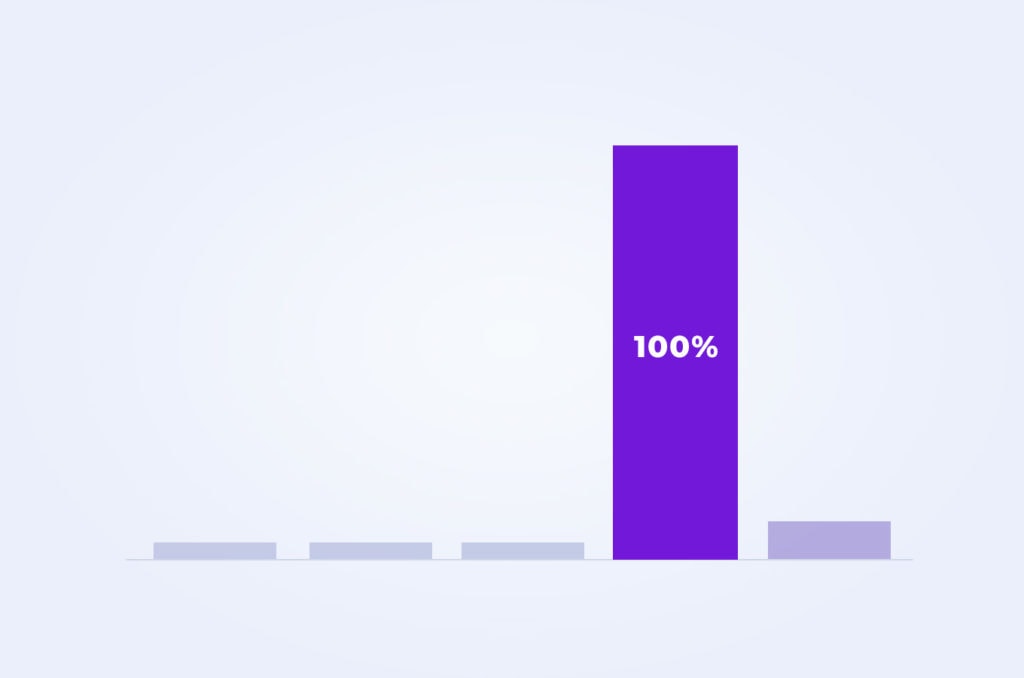
Similar problems can be found in this approach. It removes direct causality from the equation but still gives full credit to that one click that occurs at the end of a campaign funnel. Both of these models undervalue things such as brand awareness.
3. Last Ads Click Attribution
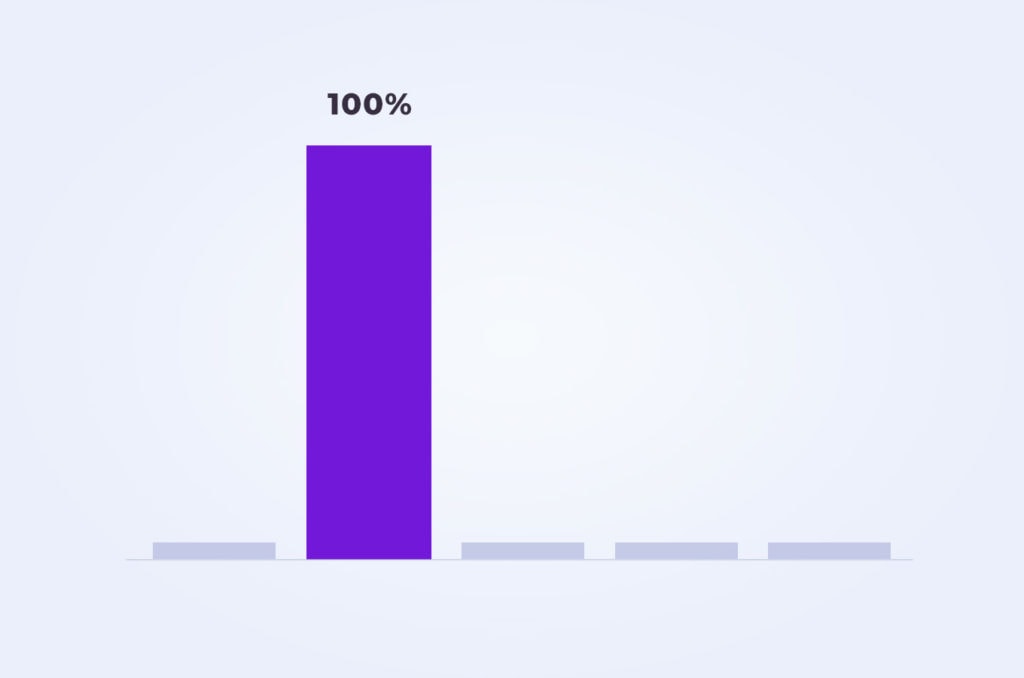
In this model, all credit is given to the last interaction with an ad. Although this model at least acknowledges the importance of ads, it still puts too much emphasis on the final interaction with them.
4. First click

This is the last model from the ‘winner takes all’ group. The first interaction attribution model favors brand awareness and recognizability over anything else. If your case involves a highly motivating brand, you should consider this model. Otherwise, look for more complex ones below.
Know that you can set Voluum to follow this attribution model. As a part of Managed Service, we can help you modify the direct tracking script to distinguish visits and conversions from returning visitors.
5. Linear
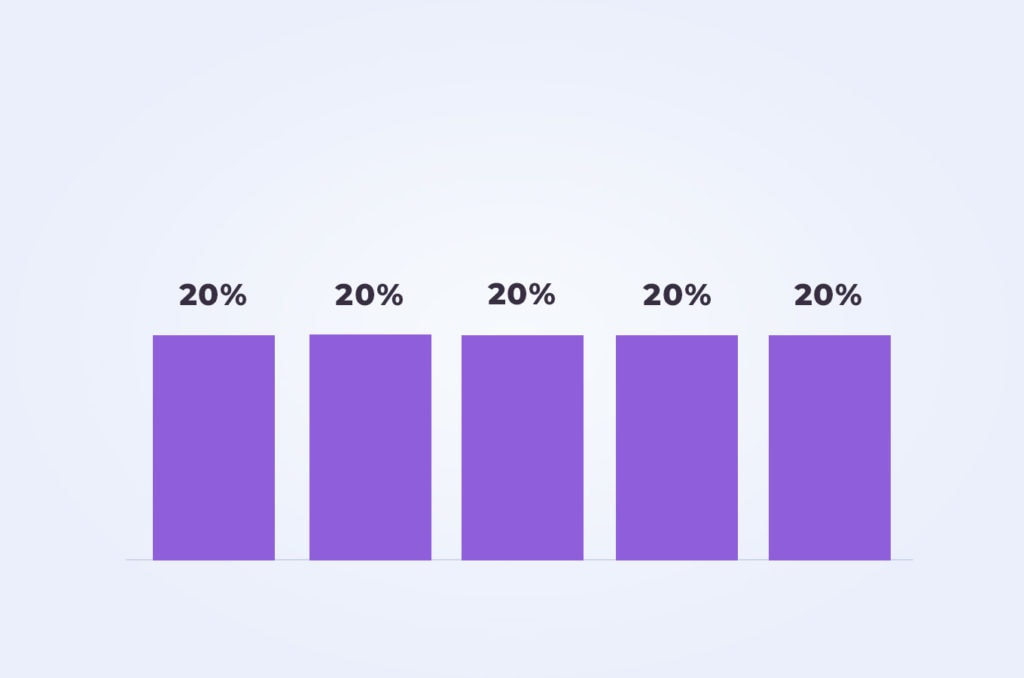
The linear attribution model should be treated as a default and should be selected if you’re unsure if other models fit better.
It assigns equal credits to all touchpoints along the funnel. It does sound good but only if you think that an email, social media post and a banner are worth the same and contribute in the same amount to the conversion.
6. Time decay attribution
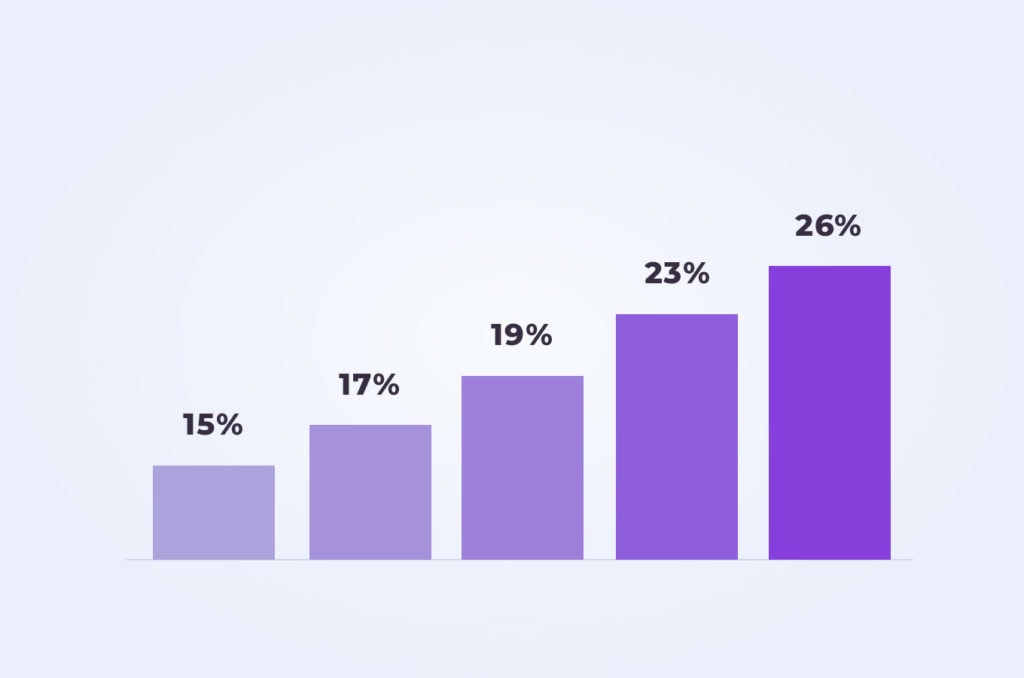
Time decay attribution model feels closer to reality by assigning more credits to subsequent touchpoints. This reflects a buyer’s growing interest in an offer.
7. Position-based Attribution
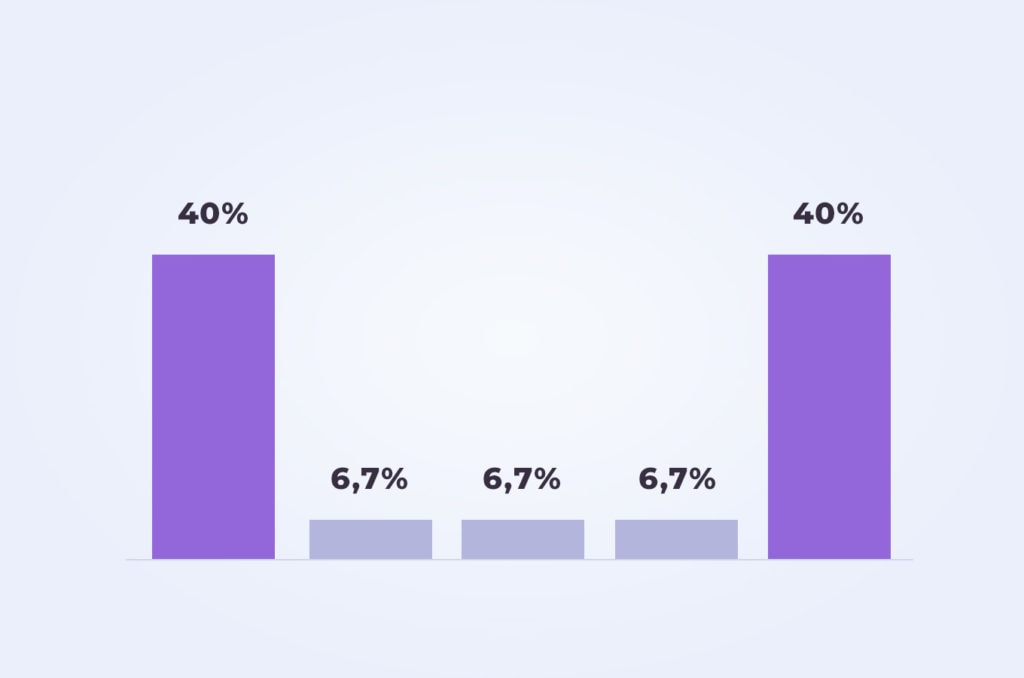
The last ready-made conversion attribution model that Google Analytics has to offer distributes 80% of credits equally between first and last integration. This works great under the assumption that those two interactions are the ones that matter the most. The first one would interest a visitor, while the last one would finalize a sale.
Position-based attribution model is the one instinctively treated as the one that reflects reality the most.
Custom attribution models
On top of choosing the above models, you can create your own solution that fits your situation more. You can really dive into the math and create some complex modeling solutions. However, don’t waste energy on trying to design the perfect model – they are imperfect by nature as they aim to reduce complex reality into a mathematically defined reality.
Data-driven attribution model
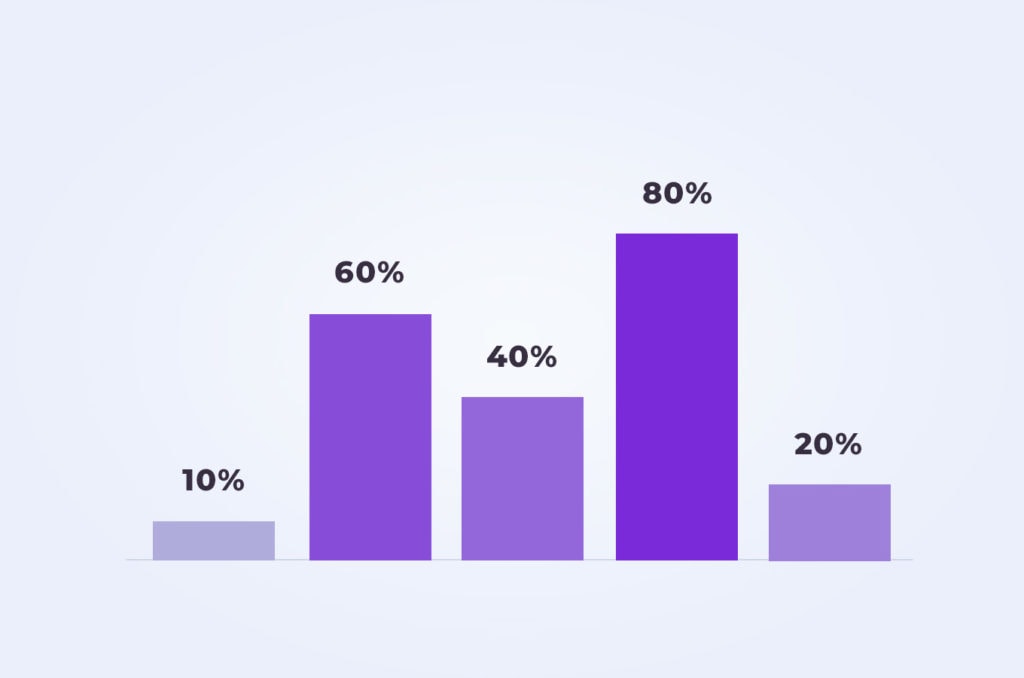
The data-driven model in Google Analytics values all interactions with your campaign. It uses data you’ve gathered to distribute credit according to the effectiveness of each touchpoint.
If you are eligible to use this model (so you have some data recorded) we recommend switching to the data-driven attribution model.
How To Choose The Best Conversion Attribution Model?
As I’ve stated before, there’s no easy answer. It all depends on your campaign type, audience, and the overall goal you’re trying to achieve.
The problem with selecting the right conversion attribution model is that you’ll never know that you’ve picked a good one until you start making good decisions based on data interpreted by this model. So, if you are making bad decisions, maybe your conversion attribution model is wrong, but it is also likely that there are some other issues with your campaign that prevent it from being profitable.
Hard to say.

To make this decision a more informed one, you can always reach out to your audience. If you have the budget for it, conduct audience surveys. Ask your verified customers what made them buy. Interview the most loyal customers, in exchange for some store credit, for example.
There’s no quantitative way of selecting the best conversion attribution model for you, fortunately there are some qualitative methods.
Conversion Attribution Strategies
Being a conversion attribution expert means being able to interpret the underlying motives behind customers’ behavior through the recorded data. To do this correctly, you should follow some of the conversion attribution tips and strategies below.
1. Connect all acquisition channels
First and foremost, make sure that you haven’t omitted any acquisition channel when setting up your analytics.
Acquisition channels are different means in which a marketing message gets to the user. This includes social media ads, display ads, offline marketing campaigns, in-app advertisements, and so on.
If you plan, execute, and spend your money on a marketing channel, there is no excuse for not connecting it to your analytics. You must not, and I can’t stress this enough, you must not analyze your data separately.
Data only makes sense when analyzed as a whole. An acquisition channel may not bring direct sales (people can’t click offline ads, for example) but it may increase your brand awareness or create and nurture a new desire that your product fulfills.
There are various ways in which acquisition channels contribute to the final sale. Make sure that you feed your analytics solution with all data you have.
2. Understand conversion paths and micro conversions
Conversion paths are sets of steps that a user makes before finalizing a sale. They may mean interacting with various touchpoints of your campaign, searching for the terms related to your keyword, or performing so-called micro conversions.
Sometimes, when a conversion is a serious one (like with purchasing a property), there are many micro conversions: booking a meeting with a sales rep or submitting a form that leads to the main conversion which, in our example, usually happens offline.
If you can, track those events as well and recreate typical paths that your customers go through before they reach their final destination.
Conversion Attribution in Affiliate Marketing
Affiliate marketing funnels are usually quite simple and the real challenge is a technical one: to correctly attribute the conversion event to the initial click.
This doesn’t mean that more advanced models have no use in affiliate marketing. You can still implement various approaches and put a bigger emphasis on the first engagement with your ad for brand-oriented campaigns or to last ad click. But first, let’s talk about how conversion attribution works in affiliate marketing.
Identifying a user in an affiliate campaign funnel
Voluum, the leading affiliate marketing software, assigns the click ID – a unique 24 character identifier – to a click and then, once it receives the click ID associated with a conversion in a postback URL or through conversion tracking pixel, compares the two. If those click IDs are the same, then Voluum attributes the conversion to this click.
The same happens for other event types, not only clicks on an ad: ad views (impression) and clicks on the CTA button on a landing page.
What the marketer gets is a complete user journey with associated characteristics, such as: device type, browser name and language, country of origin and timestamp.
Voluum allows you to connect your various marketing efforts in one dashboard. You can track paid and organic campaigns from search engines, social networks, ad networks, with many of them being integrated on the API level. Conversion can be passed either via a postback URL (a typical solution for third party offers) or a conversion tracking pixel (a solution used mainly for your own offers). With Voluum, you can even track mobile conversions once you link Voluum with a mobile attribution tool, such as AppsFlyer.
Conversion attribution models in Voluum
By connecting different acquisition channels to Voluum, you can compare and assess the effectiveness of each channel. The all-in-one approach that Voluum has allows you to attribute even third-party conversions – something Google Analytics can’t do.
Once you determine the entire conversion path, you can more precisely target your ads, purchase more traffic, and re-route your visitors to better performing landers or offers. Again, something Google Analytics can’t do, as it is purely an analytical solution that does not allow path alterations.
Affiliate software like Voluum has been designed to increase the effectiveness of your ad dollars by giving you flexibility in the amount of data it can record and the flexibility of its reporting system.
Conversion Attribution is Learning What Works
The whole point of proper conversion tracking is the ability to adjust your ad spend accordingly with user engagement levels. If you are a CMO or an agency, you also need clear numbers to back your decisions.
This is something that even the biggest expert can’t do on their own.
But just having some numbers isn’t enough. Even if those numbers look promising and back your claims and decisions. In fact, there’s one more factor that should accompany data collection: trust.
The problem with a lot of automatic and algorithmic-based solutions is that you don’t really know how your input data is being processed. What calculations are behind any of the algorithm’s decisions. Companies are usually reluctant to share any details and specifics of how their math works, they just want you to be assured that you’re getting the best recommendation possible.
Are you?
Maybe.
Your trust in such solutions should be limited and be supported by regular validation. Trust but verify.
On the other hand, standard conversion attribution models often strike as simplistic and reductive.
There’s truth behind both statements.
However, you can’t go wrong with a marketing platform that allows you to link multiple sources of traffic and conversion tracking methods. One that has easy-to-understand automation in the form of auto rules that can execute predefined actions inside integrated ad networks.
Voluum is a reliable affiliate tracking solution that uses various tracking methods that are immune to the upcoming third-party cookie block and, at the same time, in line with various ad giants’ compliance policies. Voluum fits many roles and will work well whether you are a single affiliate marketer or an ad agency.
It will give you a better understanding of your online advertising with the easy creation of an attribution report.
To know more about the money flow in the industry, who are the main stakeholders and how conversion attribution fits in all this, the team behind Voluum prepared a series of free online courses aimed for beginner or medium level marketers.
Work with the best. Learn from the best. Be the best marketer you can.

